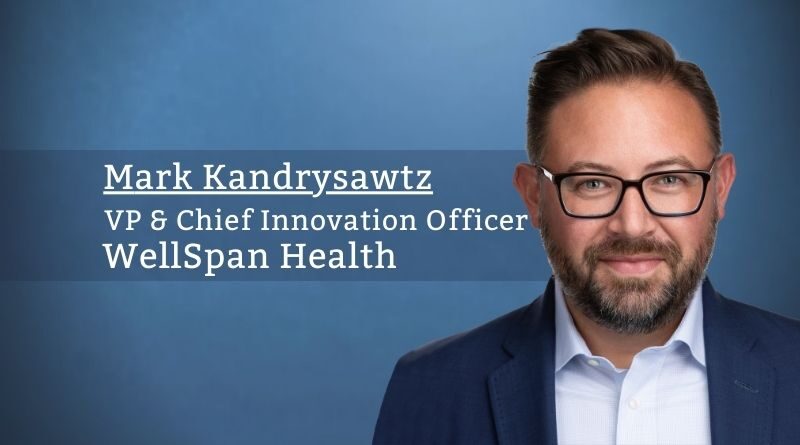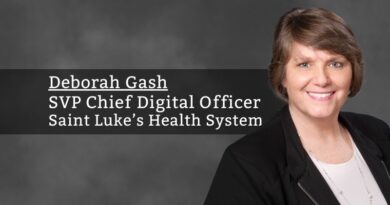Bringing a Human Touch to Evolving Digital Health Care
By Mark Kandrysawtz, VP & Chief Innovation Officer, WellSpan Health
Technology permeates every aspect of health care, from the equipment used in surgery to the way physicians take notes during a patient visit.
But we now have entered an era where digital health is maturing, allowing us to create more meaningful patient care experiences tailored to our patients’ specific needs. It is imperative that healthcare systems embrace this change, to ensure that we stay relevant to a generation of digital natives who welcome and expect these enhancements.
Put simply: technology is not enough. We need to create a great user experience for consumers who can order the exact brand of pickles they like from the grocery store that will show up at their front door later that same day. The expectations are rising, and it is our job to meet them.
At WellSpan Health, a clinically integrated network of about 2,600 healthcare providers, eight hospitals, 200 patient care locations, and 20,000 employees in South Central Pennsylvania, our digital health offerings include a product that we custom-designed for women who value convenience and the connection with a trusted healthcare system.
Called Madeline (more about the name later), it is a convenient online pharmacy service for birth control.
Launched in 2019, Madeline is a stand-alone digital experience, powered by WellSpan Health’s clinicians and pharmacy. Women may go online at any time to order their birth control, choosing their preferred method and having the prescription delivered straight to their door. No appointments are necessary, but WellSpan Health clinicians oversee the process, ensuring the patient receives safe, effective contraception. Patients also can reach out to a clinician if they have questions or concerns, or to arrange follow-up care. Currently, WellSpan is the only southcentral Pennsylvania health system to offer this kind of service.
We need to create a great user experience for consumers who can order the exact brand of pickles they like from the grocery store that will show up at their front door later that same day.
WellSpan launched Madeline because it wanted to prioritize service to young women and attract them as our patients. Studies show that women in the U.S. make about 80 percent of health care decisions for their families, so we know the downstream value of welcoming young women into our system as patients and providing services tailored to their needs.
We created Madeline after conducting our own qualitative design research that involved interviews with and observation of women as they obtained care. This allowed us to see not only the steps in that process but how women felt along the way – their pain points and their joy – so we could analyze their emotions.
We discovered, to no surprise, that women value convenience in obtaining care, but they also want a relationship with a partner they can trust and turn to, something that we can provide.
Many young women we spoke to compare their desired experience to having a trusted coach when playing on a sports team. You admire that person and value their advice. We wanted to be that coach for them when it came to birth control options and other care down the road.
In fact, we ended up choosing a human name for our product – Madeline – because we wanted to communicate that this was a “human” experience while also offering convenience.
To date, Madeline, which is still in the developmental or beta stage, has served more than 450 patients. Four providers work with the patients and one pharmacy processes mail orders, but patients also can choose to pick them up at any WellSpan pharmacy. Our obstetricians/gynecologists are happy with the service and want to continue to expand it.
Madeline demonstrates that technology is not enough, something healthcare systems across the country are seeing played out in the months after the COVID-19 pandemic. We all saw video visits rocket during the height of the shutdowns across the globe. Now, as many of our patients are becoming more comfortable returning to our clinician offices and care sites, we realize that just offering a video visit that “works” (cameras, digital connections, audio) is not enough. If we are going to maintain our level of digital visits, we need to invest in better user experiences everywhere.
What can we do to make that service better and how can we make it more convenient? What can we do to bundle more services and value into that visit?
In the end, we want our patients not just conveniently access our services but also know that we are looking out for them. We don’t expect them to notice or fix their own health problems or challenges. The technology must be married with a human partnership.
As technology matures, we all need to listen to and learn from our patients and allow that to guide the next generation of digital care that we design and create. What do they need? How can we support them in living their healthiest life? That’s what makes us a trusted partner.



